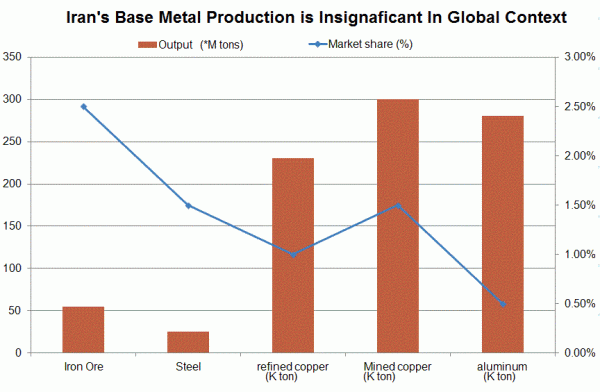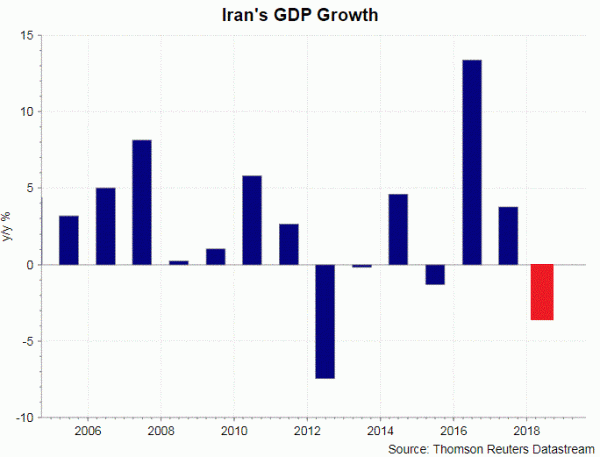One year after US withdrawal from the Iran nuclear deal, Donald Trump has signed an executive order to impose sanction on Iran’s base metal sector. The sanction covers iron, steel, aluminum and copper. While the move might further cripple the Middle East country’s economic growth, its impact on the global metal market, either in terms of prices or the demand-supply balance, is limited. After all, Iran is a small metal producer, contributing less than 3% of each of the above-mentioned metals in world production. The contribution in exports is even small.
After targeting the oil market, the lifeblood of Iran’s economy, the US announced sanction on the country’s base metal industry. According to Trump, the action “targets Iran’s revenue from the export of industrial metals – 10% of its export economy – and puts other nations on notice that allowing Iranian steel and other metals into your ports will no longer be tolerated”. Unlke previous sanctions on Iran’s oil exports, the sanction on metal should have limited impact on global balance, and hence prices. The charts below show that Iran’s production of the metals concerned is small in the global market. The biggest contributor is probably iron ore. However, it was only about 3% of world output. Exports of these metals are even smaller. Iran’s export of iron ore was estimated at 15-30M metric tons in 2018. Despite a key sector (amongst base metals) in Iran, it only represents 1-1.5% of overall iron ore trade in the world. Let’s take a closer look at Iran’s biggest trading partner, China, the destination of about 27% of Iran’s total exports. In 2018, Iranian shipment of copper concentrate to China was about 314K metric ton, about 2% of China’s total import of the commodity. Shipment of copper cathode to China was 15K metric ton in 2018. China’s import of the commodity during the period was 3.3M metric ton. Iran’s aluminum export was insignificant. China imported 160 kg of aluminum foil from Iran last year.

Iran’s economy has been devastated by international sanctions against its oil exports. A deal reached in 2015 helped lift the country’s economic growth. GDP surged +12.3% in 2016, before moderating to +3.7% in 2017. Yet, renewed sanction by the US has sent the country’s recession again. According to IMF’s estimate, Iran’s GPD contracted -3.9% last year. The enormous impact of the sanction was due to the fact that Iran relies on oil exports. According to the EIA, Iran holds the world’s 4th proved crude oil reserves. Oil revenue has contributed to 80% of the country’s GDP. Iran’s metal market is way smaller than its oil market. Therefore, we expect Trump’s latest sanction would have milder impact on Iran’s economy than previous ones. Given Iran’s limited exposure in exports of base metals, the impact of the sanction on world metal price is negligible.













